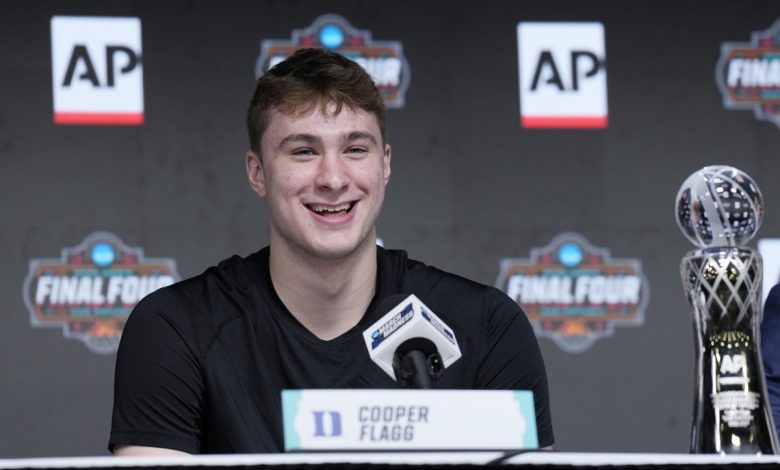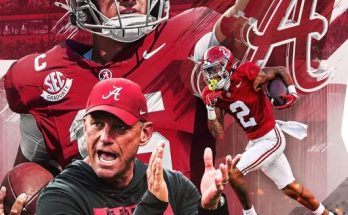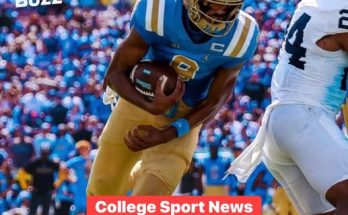In a move that has shocked basketball insiders and ignited fierce debate across the college and professional basketball landscape, Cooper Flagg has signed a four-year contract with the Duke Blue Devils, effectively tethering himself to the program through the 2028 season. The decision, unprecedented in the name-image-likeness (NIL) era, sends ripples through a college basketball scene still adjusting to newfound player freedom and agency. While loyalty and stability are admirable qualities in a sport often dominated by short-term thinking and financial pursuits, Flagg’s long-term commitment to a single college program is already drawing criticism. In many circles, the sentiment is clear: this was a poor decision that could hinder his growth, earning potential, and readiness for the NBA.
For a player widely considered the best prospect since LeBron James, Flagg’s potential was never in question. The 6-foot-9 phenom out of Newport, Maine has been on the radar of scouts since middle school, and his dominance at Montverde Academy, paired with an awe-inspiring performance in the AAU and international circuits, cemented his status as a generational talent. When Flagg reclassified into the class of 2024, fans and analysts immediately assumed that his time in college would be brief—one season, maybe two, before an inevitable top-three selection in the NBA Draft. Signing a four-year deal with Duke flies in the face of that expectation and, according to critics, sacrifices flexibility for security he didn’t need.
To understand the magnitude of this decision, one must examine the current college basketball landscape and how NIL has upended traditional notions of amateurism. Players like Flagg have access to multi-million-dollar deals without ever stepping onto an NBA court. According to reports, Flagg’s contract with Duke includes robust NIL guarantees, national marketing campaigns, and off-court business ventures that could elevate him to a level of financial independence rare for anyone under 21. But money, for all its power, is not the only consideration for a prospect of Flagg’s caliber. There is also the risk of plateauing in college—a game structurally different from the NBA, with slower pace, weaker spacing, and more zone defenses that obscure the read-and-react instincts that NBA teams value so highly.
By signing a four-year contract, Flagg is essentially gambling that Duke’s infrastructure—its coaching, development staff, exposure, and competition level—will continue to accelerate his growth, rather than limit it. But what happens if that’s not the case? What if injuries arise, or if the team underperforms, or if the college game fails to prepare him adequately for the pro level? Locking into a long-term commitment means those contingencies come with potentially devastating consequences. In the NBA, rookie-scale contracts are four years, but they come with performance triggers, player options, and an obvious route to re-enter free agency with leverage. In college, there are no such outs. And unless Flagg negotiates a clause to leave early—a detail that remains unclear—he may have bound himself to a situation that no longer serves his best interests.
This also presents a seismic precedent for future high school stars. Flagg, for better or worse, is now the face of a new model—one in which a player bypasses the one-and-done pipeline for a pseudo-pro experience at a blue-blood program, hoping that long-term security will outweigh the immediate rewards of turning pro. But is that sustainable? And more importantly, is it smart? The best players in the world—from Kevin Durant to Anthony Edwards to Paolo Banchero—used college basketball as a brief springboard, a stopover before their real development began against the best athletes on the planet. College, in that sense, served a clear purpose: brand-building, experience, exposure. But four years? That stretches the utility of the NCAA to its breaking point, especially for a player who will be 21 years old by the time the 2028 draft rolls around.
Flagg’s supporters argue that he is making a mature decision, prioritizing team chemistry, continuity, and loyalty over short-term gain. And perhaps, for a player who comes from humble beginnings and appears deeply grounded, there’s something admirable in that. He’s not chasing quick money or an NBA lifestyle. He wants to build something at Duke, and in a sport often dominated by transactions and self-interest, that kind of old-school commitment is rare. But in reality, the basketball world doesn’t reward patience in the same way it once did. The NBA is getting younger, faster, more aggressive with its timelines. By the time Flagg becomes draft-eligible in 2028, he could find himself competing with players three or four years his junior who benefited from accelerated development in pro systems.
There’s also a real concern about injury. The longer a player remains at the collegiate level—especially under the heavy minute loads and physical demands of ACC play—the more exposed they are to risk. Even with top-tier medical staffs and world-class facilities, Duke cannot offer the same level of physical preservation or tailored load management that NBA franchises can. A freak accident, a chronic nagging injury, or simply the grind of a four-year college career could derail a prospect’s ceiling, even if he enters healthy and dominant. In that regard, Flagg’s decision isn’t just unconventional—it’s potentially reckless.
Then there’s the matter of perception. Front offices may publicly applaud Flagg’s loyalty and work ethic, but privately, they’ll ask the same questions fans are asking now: Why didn’t he test himself earlier? Why did he delay entering the highest level of competition? Did he peak early? Was he too comfortable at the college level? It’s unfair, perhaps, but perception shapes draft position and investment. NBA teams want players with fire, with ambition, with the mindset that they belong on the biggest stage as soon as possible. Flagg’s decision introduces doubt—not necessarily about his talent, but about his readiness to embrace that pressure.
Beyond the basketball implications, this move could also impact his earning potential in the long term. Yes, NIL provides a healthy financial cushion, and Duke is one of the few programs capable of making such a deal possible. But nothing compares to an NBA rookie deal followed by a max extension, shoe endorsements, and playoff bonuses. Every year Flagg delays entering the draft is another year of potential lost earnings. The NBA’s salary cap is rising, as are rookie-scale contracts. Entering at 19 could mean $200 million in career earnings by age 30. Entering at 21 or 22? That timeline shifts, as does the player’s ability to maximize his peak performance years.
Even beyond the individual level, Flagg’s contract sets a tricky precedent for college basketball as a whole. If elite prospects begin signing multi-year commitments, what does that do to the transfer portal, to roster fluidity, to the very concept of amateurism? The NIL era was built on the idea that players could finally own their careers, move freely, and capitalize on their brand. But contracts like Flagg’s feel eerily close to professional agreements without the safeguards of a union or collective bargaining protections. If a player is locked in and unhappy, what is his recourse? Can he renegotiate? Can he leave without forfeiting millions in NIL guarantees? These are questions that the NCAA is not currently equipped to answer.
Ultimately, this may be a decision that only Cooper Flagg truly understands. He has never been the typical prospect. He has spoken often of his desire to lead, to inspire, to change the way athletes approach the game. Perhaps, to him, staying at Duke and building a dynasty matters more than checking boxes on a path to the NBA. Perhaps he views this as his version of a pro career—a high-level basketball experience with familiar faces and passionate fans. And maybe, just maybe, it works out exactly as he hopes.
But history and logic suggest otherwise. The NBA isn’t going anywhere. The pressure to perform at the highest level isn’t softening. And in that world, delays often come with consequences. For all of Flagg’s transcendent gifts, for all of Duke’s legacy and NIL muscle, there is a haunting sense that this choice—bold, defiant, and loyal as it may be—could wind up limiting what should have been an unbound future. Flagg didn’t just sign with Duke. He signed away his leverage, his flexibility, and perhaps his chance to redefine greatness on his own terms.
Time will tell whether this move makes him a pioneer or a cautionary tale. Either way, the clock is now ticking—four years and counting.



